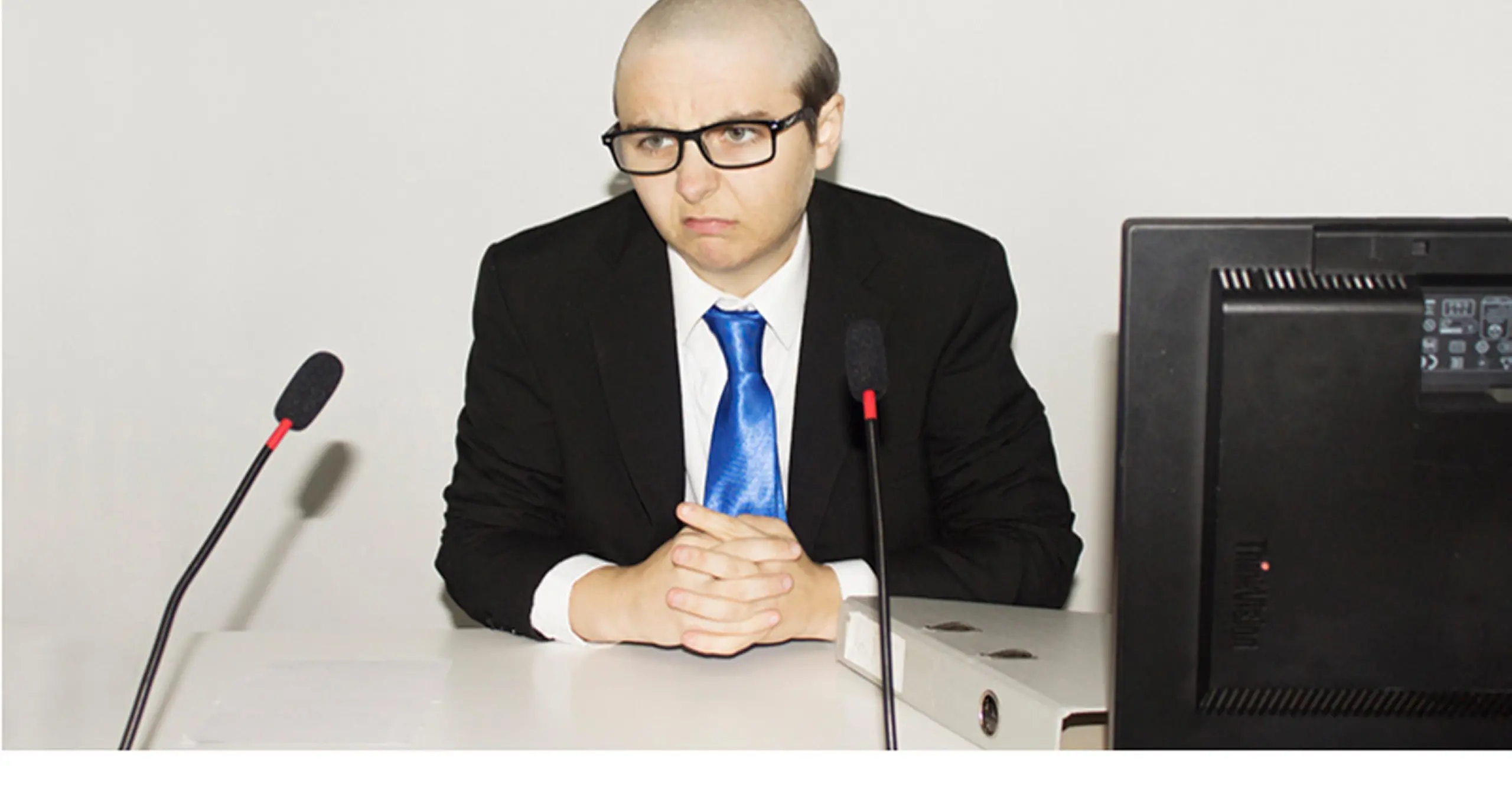Jennifer Forward-Hayter shares a story behind the photo project They Were Ours: A recreation of the Leveson Inquiry.
2021 marks the start of the ten year anniversary of the Leveson Inquiry, a public ‘trial’ that questioned the practices of the British press. It began with Nick Davies, a journalist who wanted to report on his own industry and quickly found a story closer to espionage. They Were Ours is a recreation of the Leveson Inquiry. All 324 witness statements are re-enacted, played together in a 25-second video.
Just like Davies’ self-referential examination of the media industry, this is a photographer reporting on the photographic history of the early 2000s, of which the inquiry was meant to dissect. The photographs are cheap, low quality, made and processed quickly. The costumes are cartoonish, and reused; there’s just enough to evoke the icon. The audience is finally made implicit in this culture of photojournalism too. In order to read the video, one must take a screenshot… who do you manage to capture under your flash?
Watching the real trial, a decade ago, is where I learnt that taking pictures could be a job. I didn’t know the word ‘photographer’ so I used ‘paparazzi’ instead. Paul McMullan testified that taking tabloid pictures was more dangerous than his previous work reporting war zones. Photographers were pretending to be anyone from doctors to rent boys in order to get their shot. It was my first education of photography, and it was exciting! Everyday, pictures were being discussed on the news instead of John Berger’s ‘Ways of Seeing’, but this was the last time the photographic industry would ever be examined outside of itself.
They Were Ours started with an Excel spreadsheet, which took around four months to compile. The set was rebuilt in a 30 square foot storage unit out of fly-tipped furniture. Locations that appeared over livestream had to have doubles found for them too: Piers Morgan’s office was found in a homeless shelter near Oxford Street. One of the controversies of the Leveson Inquiry was just how much it cost the taxpayer, which was over £5 million in total. Now I am not saying I should be the next chancellor of the exchequer, but my recreation cost just over £500.
I would shoot about once a week, to sit in a ‘the hot seat’ I had created for myself. The storage unit was so small, I would crawl underneath the office table in order to get to either side. Every 30 minutes the lights would turn off, and I’d have to crawl underneath the table, in whatever guise I was in, and walk down the corridor to turn them back on. I was shooting for four months.
A photographer by nature is an obsessive character, they decide who is worthy of record. What was the interest in pictures of Hugh Grant’s car breaking down, and why bother taking 324 near identical photographs? Before each shot, I would stare at a small print out of a particular witness, trying to work out what small adjustments represented them, and how that moved the inquiry onwards.
This repetition felt like Muybridge’s studies of motion.
